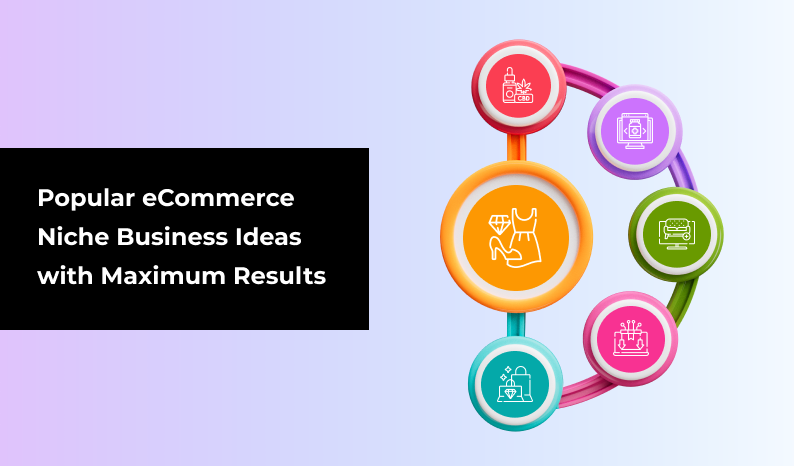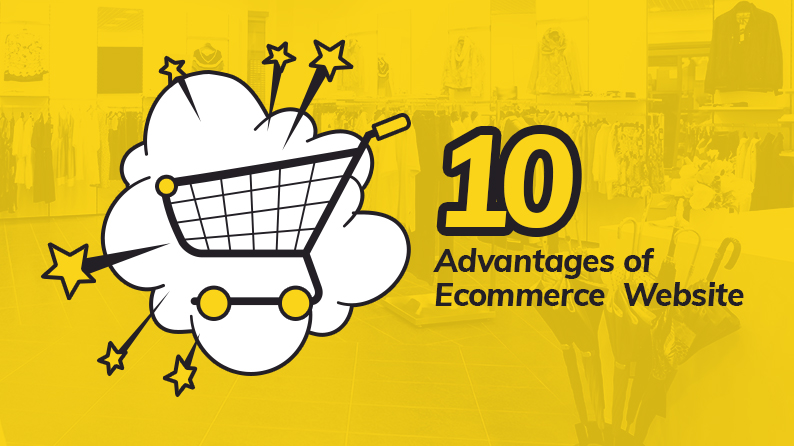Last Updated: 06 June, 2024
Pause for a moment, and think like a consumer… In today’s e-retail ecosystem, where are you most likely to shop?
For nothing that specific: probably Amazon or Walmart. But if you are very specific about what you want to buy. Let’s say a beautiful handcrafted gift. You’ll probably head towards Etsy or a similar handmade products marketplace. There, you are sure to get a tailored ecosystem, precisely for what you want, as opposed to being bombarded (and distracted) by a plethora of choices on a horizontal marketplace like Amazon.
Right, there is the big advantage of a niche eCommerce marketplace strategy. In the competitive eCommerce ecosystem of today, your online platform is most likely to gain traction, if you define your brand with a specific product category, or a theme, just like Etsy did. That will help you to position a brand in a unique space, and get that recall value from the perspective of the target consumers. That said, the next billion-dollar question is which eCommerce niche is good for your new business venture. Fasten your seat belts, as we reveal the most profitable eCommerce niche ideas in 2024, and how to choose the top niche in eCommerce.
Table of Contents
So, What is a Niche Marketplace?
As discussed, Etsy is a niche marketplace while Amazon is not. So what exactly makes a niche marketplace? Effectively, it is taking out a segment of a more mass-market online business, and starting an eCommerce marketplace based solely on that segment. What this means is that you have a chance to personalize your business and reach directly to a specific audience, something which the mass-market online business cannot. Because, when an online business does that, it has the opportunity to be synonymous with the need. For instance, take the example of Etsy again:
Online Handmade Products Marketplace ⇔ Etsy
So it’s similar to creating a community or a club. For instance, if you are starting a club for bibliophiles (or book reading), you will curate the ambiance, seating, lighting, and other elements to serve this purpose. A Niche online marketplace is defining this clarity of purpose, to serve a very specific user base, with a specialized business model.
It’s important to note here that the niche will be defined by a collection of products or even product categories, that answer specifically to the targeted unique user needs. Just like the example shared above, an eCommerce niche for bibliophiles will be an eBooks marketplace. Here the whole eCommerce platform will be catered to customers who want to buy eBooks and also the sellers who want to sell eBooks.
Alright, But what makes a Niche marketplace strategy work?
By the year 2027, 23% of all retail is expected to take place via online channels. At the same time, currently, the market leader Amazon, eats up nearly 38% of all e-retail sales. So while the online business opportunity is there for the taking, one needs to find a way to stand shoulder-to-shoulder with the online behemoth, to attract users. This is why a niche marketplace strategy can be leveraged. Consider the following advantages:
Easier Start: By operating in a limited space, eCommerce startups can have the advantage of taking measured initial steps. For such businesses, the resources required are less, and its easier for startups to bootstrap.
The Advantage of Less Competition: A niche allows an online business to operate in an exclusive space, where competition will be lesser.
Marketing is easier: With a defined purpose, and a segmented target audience, such businesses can curate effective marketing strategies with relative ease and with a lesser budget.
Opportunity to build a Specialized ecosystem: With distinct needs, such businesses can personalize their ecosystem around its theme. Right from the UI/UX, to platform features, integration, business policies, and more, niche marketplaces can curate an ecosystem around its users.
Independent Pricing Strategy and more perception of value: When niche eCommerce platforms offer exclusive access to certain products, that are specific to their niche, they can create a higher perception of value and hence, execute market-independent pricing strategies.
Higher likelihood of Repeat Business and Customer Retention: With a niche business, a marketplace is effectively building a community of users with similar interests. There is a greater likelihood of these customers returning to the platform.
Leverage Vertical Growth: Once the online business gains a foothold in the market, it has a chance to grow vertically as well as geographically.
Which are the Top eCommerce Niches?
Alright, let’s turn our attention to the pulse of the market and uncover the top niches in eCommerce. There are two ways to look at uncovering viable niche business ideas. Either these are ideas that have been executed by disruptive businesses or are fertile grounds ready for inroads by startups. Listed below, are some niche eCommerce business ideas, categorized under a common parameter that makes them attractive to the users. So, read ahead to know top eCommerce niche ideas and why to choose them.
Easiest to Market Niches
Let’s start with eCommerce niches that are more popularly adopted. These are retail industries that have been traditionally well-suited to online sales. So consumers are well acquainted with finding these products online. The supply chains are well sorted out, or in other words, onboarding sellers will be easier as well. On the flip side though, competition can be more, and one has to be more creative in the execution of the business idea. Shared below is a report from eMarketer which demonstrated which product category consumers in the US, purchase the most online.
1. Fashion: Products related to fashion are more popular online because there is sustained demand, shipping and returns are simpler to manage and execute, and likewise sellers are easier to onboard. However, fashion itself is a big industry and includes multiple sub-niche options like shoes, jewelry, bags, and more. Each of these categories can propel an eCommerce business on its own.
Examples: ASOS, FarFetch, StockX, Zalando.
2. Homeware and Garden: Since the pandemic crisis, consumers have been developing an increasing love for their homes. Hence, the sale of homewares has been increasing. Just like Fashion, the homewares industry also incorporates multiple ways to start an eCommerce marketplaces like Kitchenware, Lighting solutions, Art collectibles, and more.
Examples: Wayfair, HomeDepot, Lampwelt.
3. Healthcare and Pharma: Another industry that was shaken and stirred up by the pandemic, the Healthcare and Pharma eCommerce niche has opportunities both for B2C and B2B buyer groups. While B2C has products such as supplements, protein powders, and more the B2B Pharma has multiple opportunities like medical equipment and supplies, contract manufacturing liaision, raw material supply, and others.
Examples: Medline, PipelinePharma, Procurenet.
Get a Robust Solution for Online Pharma Marketplace
4. Stationery and Office Supplies: This stationery industry stationery industry has been gaining momentum in the recent years. Stationery has always had an ardent following amongst a certain user base. This is driving online sales for assorted products. While office supplies are a sustained in-demand product category.
Examples: WHSmith, Office Depot.
eCommerce Niches with Low Barrier to Entry
Not all eCommerce businesses are the same. Some give newer entrants a low barrier to entry with lower overheads and fewer considerations than others. The overall infrastructural development is typically less than other online platforms. Some such niches in eCommerce are:
5. Digital Goods: Ebooks, audio & video, digital photos, software, Video games, and website design resources are popular digital products sold on eCommerce platforms. Since no physical inventory has to be maintained and no shipping is required, digital goods marketplace is a low barrier to entry niche.
Examples: Envato marketplace, Regake, Freepik.
6. P2P Niches: In a peer-to-peer business model, shipping, and more, are typically managed by the sellers themselves. The online platform acts as a facilitator. So such marketplaces have low overheads and are easier to get started with. The more popular P2P niches are DIY, hobby, and lending.
Examples: Etsy, eBay, Upstart.
Encash Popular Trends with These Niches
Let’s move on to niches driven by trends.
→ Growing Trend: Sustainability
The recent climate crisis and catastrophic developments have got people concerned about the future of the planet. Sustainability is one of the top trending topics. Online businesses which adopt this theme have been able to garner consumer interest. The following niches are the top byproduct of sustainability as the core motivator.
7. Eco-friendly product marketplaces: These offer sustainable alternatives to everyday items of use. These include products from groceries like meat and milk alternatives; fashion such as artificial leather, industry alternatives such as plastics and sustainable cleaning materials, and more.
Examples: EarthHero, EcoCart, Blueland.
8. Recommerce: Another sustainability trend, recommerce is repurposing used items and selling them again for reuse. As of 2023, the Fashion industry alone produced 97 million tonnes. The rising awareness around this impediment is making consumers shift towards repurposing used products. Hence, the increasing relevance of recommerce platforms. Recommerce can include products such as furniture, fashion, shoes, electronics, and others.
Examples: Swappa, Gazelle, Mercari.
→ Emerging Trend: Natural Wellness Solutions
Another trend that has emerged in the aftermath of the pandemic, is the increased focus on natural wellness products. Here CBD has emerged as a lucrative eCommerce niche
9. CBD Marketplace: Cannabidiol or CBD is a compound found in a plant called Hemp. This compound is different, and It is unlike another compound from the same plant i.e. THC, that is known for leading a user to be spaced out. Rather, it has been associated with health benefits by researchers. Hence CBD is gaining popularity. Available in oils, biscuits, candies, pills, and more. Since this niche is still relatively new, CBD sellers are looking for new online sales opportunities.
Examples: CBD.Market, BuyCBDSupps.
→ Ongoing Trend: Personalization
Personalization is a key driver of sales in the current times. Online platforms that allow customers to buy bespoke products find good traction with them.
10. Print-On-Demand: An eCommerce platform dedicated to print-on-demand products gives its customers a window to explore their creativity and own personalised products. Some popular choice of products in this niche are clothing, stationery, accessories such as phone cases, home decor items.
Examples: Redbubble, Gelato.
Cater to High-ticket products
There can be two ways to generate revenue from any retail undertaking, online or offline. Either a business that caters to the mass market, leveraging volumes for revenue generation, or, it can cater to the premium end of a market, with an exclusive product range. Similarly, online multivendor marketplaces can choose to operate exclusively in a premium niche, by offering high-ticket products.
11. Luxury Goods & Collectibles: The luxury end of the retail industry includes many product categories from fashion, home decor, furniture, Art & rare collectibles, lifestyle, and others.
Examples: Farfetch, Artemest, Artsy.
Attract Users with Contemporary UI/UX
Focus on specific demographics
More ways to segment your target audience are by age, gender, or ethnicity. Based on this segmentation, unique needs are identified. eCommerce platforms that focus on such needs have the potential to gain attention from the selected target audience. One such popular audience segmentation niche is shared below:
12. eCommerce for men: Online retail businesses have often focused on women and children with products such as cosmetics, fashion, or toys. And traditionally, men have been less of a priority. But evolving cultural changes have meant that eCommerce platforms built exclusively for men have the opportunity to find traction. In this niche, popular product categories include toiletries, clothing, cosmetics, and others.
Examples: LetsShave, Chubbies, Luxurymenswear.
These were some of the top eCommerce niche ideas that are attracting new eCommerce startups. As you might have observed, there are multiple ways to design your eCommerce strategy within a niche as well. For instance, you can start a fashion marketplace that offers clothing, shoes, accessories, and more ― or you can start a platform just for shoes.
Okay, Now, How to Choose eCommerce Niche for your Business?
So, it can be concluded that there are multiple niches for you to choose from. There are niches and then there are sub-niches within the niche itself. With permutations and combinations, you can arrive at a significant number. While we discussed which are the more popular niches and why to choose them, in this section let’s learn how to choose a niche.
To arrive at any business decision, you need to follow a process. First, analyze the market, gather relevant data, and assess your options. Let’s discuss this in detail:
Understand your market
Your starting point is the analysis of the current market scenario. What is trending in the market and how are the consumers’ needs addressed by the existing businesses? ― Identify the need for a niche, work on understanding the market size of the particular niche, and its growth potential. A growing market is more likely to accommodate newer players alongside existing incumbents. Use the following methods to gather actionable data:
- Search on Google, follow often searched items.
- Use tools like Google Trends, and follow social media to understand what is trending.
- Observe online forums and discussions.
Run a Competitive Analysis
Analyze your competition, both locally and at a national level. Gather data around their strengths and weaknesses, the products and services they offer, their pricing strategies, services on offer, and other areas that are likely to have a bearing on the consumer experience.
Identify and discern the target audience
Work on identifying your target audience Gain an extensive understanding of them. Build a consumer profile and gain a thorough analysis of their needs. Are the existing eCommerce businesses catering to those needs or is there an existing gap that can be leveraged by your business?
Evaluate Expected Overheads
Any business will come with some overheads. Although these will vary from one business to another ― The same holds for an eCommerce business. Make a list of expected overheads. Especially since these will vary from one niche to another. For instance, the digital products niche will have lesser overheads when compared to a scaled-up homeware product marketplace.
Interested in Building a Digital Goods e-marketplace?
Assess Product Categories
The next step is to understand the product categories in question:
- Gauge the demand: A healthy demand for a product promises the viability of newer businesses.
- Determine the supply: Supply here means sellers, who have adequate resources to meet the demand. You can go a step further to understand if there is any supply chain volatility.
- Profit Margins: For long-term business health, it is ideal if the market allows for healthy profit margins, which can cover overheads. The earlier you reach break even, the sooner you will be able to push for growth.
- Potential Risks: Identify any apparent risks such as economic downturns or changing consumer preferences.
Find out Pain Points
Most successful businesses, especially eCommerce, have grown to prominence by giving solutions to existing pain points in the market. Work on finding pain points. For instance, the success of Etsy is built upon giving solutions to a select user base, which was attractive enough for them to consider Etsy over a bigger platform like eBay.
Revenue Model Options
A multivendor marketplace gives you multiple revenue-earning options i.e. product commissions, subscription plans, product listing fees, paid ads, and others. Decide which niche gives you maximum opportunity for earning revenue.
Estimate Initial Investment
Each eCommerce niche will have its considerations to account for. Accordingly, your business will be built around those considerations. Chalk out an investment analysis for your shortlisted niches. Take your decisions accordingly.
Examine Technology Considerations
Just like investment, each eCommerce niche will need a careful workaround with appropriate technology solutions. In other words, your eCommerce platform will need features to give all users on the platform to carry out their tasks.
But, building an eCommerce website is difficult, Right?
Short answer, yes, unless you are aware of all the options. Let’s understand this in a little more detail.
If you simply start using the traditional approach of building your eCommerce website. The first thing to do will be to come up with the right set of features that supports your niche, look for an eCommerce development partner, and wait till your platform is ready. While this is subjective, put a ballpark estimate for this is $50,000 – $500,000 of cost and about 4-9 months of time.
Today, starting an eCommerce business is much simpler, courtesy of turnkey eCommerce solutions. These are pre-built software that allow you to get started with your eCommerce business much faster and at a fraction of the cost.
Visualize how your Ecommerce Platform will Work
Pick your Niche, Get Started
Between the 4 years of 2019 and 2023, eCommerce websites surged from 9.2 million to an astounding 26.5 million in numbers globally, according to a report by Markinblog. This means in just 4 years, the number that reflected nearly two decades of progress has tripled. For the future as well, the industry is expected to carry forward the momentum of growth.
While these numbers reflect sustained opportunity in the industry, this also means that aspiring entrepreneurs need to be quick-footed with their eCommerce startup plans. A delay means, more competitors in the domain. The list of top eCommerce niches in eCommerce can give you a starting point. Subsequently, your market analysis and research will substantiate it further to curate a business plan. However, to execute this plan, leverage a turnkey eCommerce solution. YoKart is a readymade eCommerce solution, with features to cover essentials in all the niches detailed in this blog. Connect with us, and our team of eCommerce experts will be happy to assist you.




